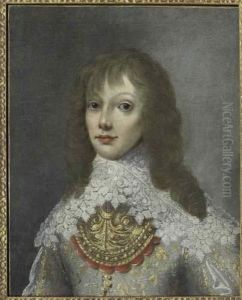Philippe Lallemant Paintings
Philippe Lallemant was a French painter born in 1635 in Abbeville, France. He was known for his work in religious themes, having created numerous paintings for churches and other religious institutions. Lallemant's artistic career was significantly influenced by his time in Rome, where he was exposed to the works of prominent Baroque artists. The Baroque style, characterized by its dramatic use of light, rich color, and dynamic compositions, had a profound impact on his artistic development.
During his time in Italy, Lallemant was also influenced by the Bolognese School and the Carracci family, who were pivotal in the advancement of the Baroque style. He absorbed the lessons of Annibale Carracci and his followers, incorporating their approach to composition and figure drawing into his own work.
After his sojourn in Italy, Lallemant returned to France, where he became a part of the French art scene. His works from this period show a mastery of the Baroque style, with an emphasis on dramatic lighting and expressive figures. He continued to receive commissions for religious artworks, and his paintings were notable for their emotional intensity and their ability to convey religious sentiment.
Philippe Lallemant's contributions to French Baroque painting were significant, though he may not be as widely recognized as some of his contemporaries. His works can be seen as a bridge between the Italian influences of the Baroque and the development of this style within France. He passed away in 1712, leaving behind a body of work that reflects the rich cultural exchanges between Italy and France during the Baroque period.
